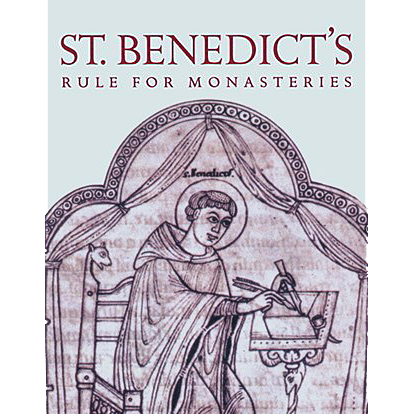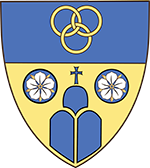St. Benedict
His Life and Times
“Our hearts, therefore, and our bodies must be made ready to fight under the holy obedience of His commands; and let us ask God to supply by the help of His grace what by nature is not possible to us. … we must hasten to do now what will profit us for all eternity.”
– Rule of St. Benedict, Prologue
“There was a man of venerable life, blessed by grace, and blessed in name, for he was called ‘Benedictus’ or Benedict, who led a very virtuous life and from his childhood had the heart of a man far advanced in age. More mature in character than in years, he gave no thought to pleasure; while he still abode on earth and was free to enjoy temporal blessings, he spurned the joys and attractions of the world” (St. Gregory, Dialogues, Book II).
As a youth, Saint Benedict (480-547) was sent by his family to study in Rome. “But when he perceived that many students were rushing headlong into ruin, he withdrew … he discontinued the pursuit of letters and … resolved to become a religious, being desirous to please God alone.”
As Benedict made his way to Subiaco, where he would live in a cave for three years, “he met a monk named Romanus, who asked whither he was going. … he gave him aid, supplied him with a religious habit, and served him as far as lay in his power.”
The cave at Subiaco was for Benedict a place of concealment, temptation and revelation.
He was hidden from the world but the nature and needs of the world of men were revealed to him. In solitude and silence, it was revealed to the young Benedict that all men and women are called to the new life in Christ and that this new life demands a deep ‘inversion of tendency’: the craving for possessing more and more must be replaced by the commitment of detachment from the goods of the earth; the logic of competition to gain possession of ever greater wealth, must be opposed by the effort to lead the greatest possible number of men to just prosperity; a mentality which considers material goods as an object of prey, must make way for a mentality which sees in them means of friendship and communion.
The Holy Rule

The Rule of St. Benedict is the concrete expression by which monks put the Gospel into practice. Aside from reflecting on the Rule individually, as a community the monks listen to a passage from the Rule daily after their noon meal.
Discover Benedictine Spirituality today:
There are values that can be understood only by the “new man” who, being born again in Christ, rediscovers the real meaning of things. Conversion of the heart is necessary to be able to look at worldly realities with the eyes of Christ, who, with his word and example, revealed to us that real riches lie in detachment, real strength in what people consider weakness, real freedom in putting oneself voluntarily in the service of brothers.
“One day while he was alone, the tempter approached him… he was beset by so violent a temptation of the flesh as he had never before felt. For he had once upon a time seen a certain woman and now the evil spirit pictured her to his fancy; the memory wrought so powerfully upon his mind that he could scarcely bear the fire of lust burning within him and he was on the point of yielding to a temptation to leave his wilderness. Then, suddenly mindful of the grace that was within him, he returned unto himself, and seeing a thorny shrub close at hand, he cast off his garment, threw himself into the brambles and rolled about in them till every part of his body was suffering torture. Thus by the wounds which afflicted his body the wound of his soul was healed… he overcame sin by replacing one kind of fire by another. From that time, … he no longer felt temptations of the flesh, so completely had he triumphed over lust. After this, many began to leave the world and hasten to receive instruction from him” (St. Gregory, Dialogues Book II).
St. Benedict summarized his vision of community life in his Rule for Monks: “… a book commendable both for its good sense and attractive style. If any one wishes to study his character and manner of life more closely, he will find it embodied in the precepts of that rule, for he could have not taught otherwise than he lived” (St. Gregory, Dialogues Book II).
After establishing 12 small communities near Subiaco, St. Benedict moved to a permanent monastic site at Montecassino: a place of solitude and of witness.
“A monastic life of isolation has it’s place, but a monastery also has a public aim in the life of the Church and society as a whole. It must serve to make faith visible as a force of life.”
– Pope Benedict XVI


